Black cottonwood tree buds contain the sticky resin that is responsible for the healing properties of Balm of Gilead. The resin is the sap from the cottonwood tree or balsam poplar. Learn to harvest the buds and use them to make Balm of Gilead oil and salve. Balm of Gilead salve is anti-inflammatory, and pain relieving and traditionally used for sore joints and muscles.
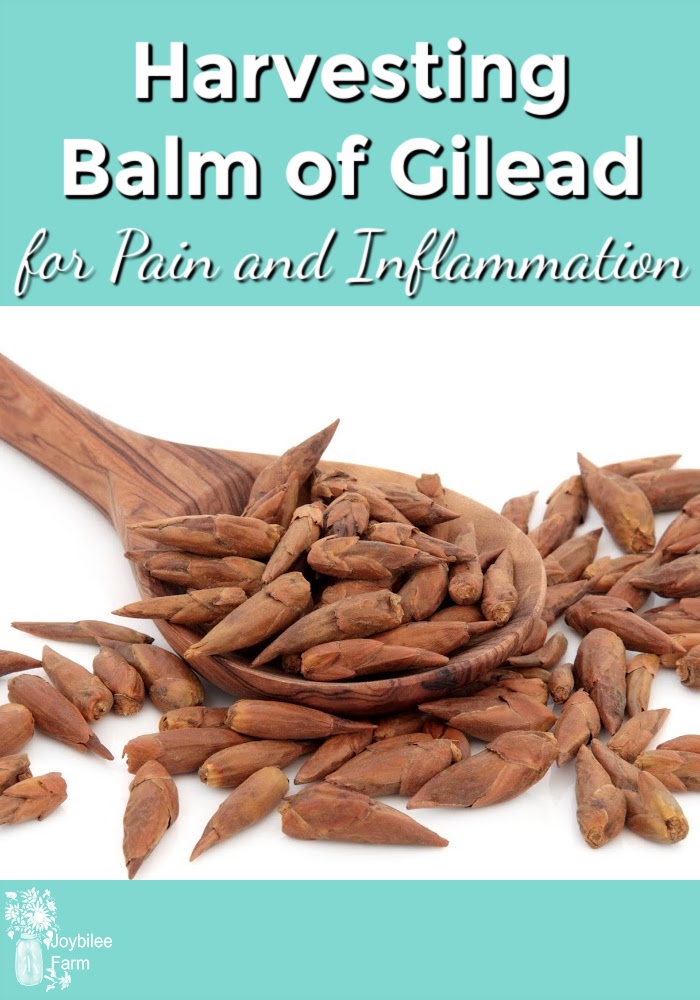
Harvesting Balm of Gilead
Around Joybilee Farm one of the first signs of spring is the pleasant fragrance of the wind in the cottonwood trees. It fills the air with a joyous perfume and announces the season for the harvest of the spring buds needed for Balm of Gilead ointment. In the late spring, you’ll know if you have cottonwoods growing near you, by the abundant white, cottony fluff that lines the lanes and pathways and floats through the air. But don’t wait for the fluff before you start looking for cottonwood buds or you’ll miss out. These are not the only spring buds that can be used for herbal remedies either!
Balm of Gilead comes from the early spring buds of the Balsam Poplar (Populus balsamifera), the Black Cottonwood (Populus trichocarpa) or the Narrowleaf Balsam Poplar (Populus Angustifolia). There are several other cottonwoods and poplars native to North America but only these 3 produce the balsam buds and characteristic medicinal scent of balm of Gilead.
This post is about harvesting and using the spring buds of the Black Cottonwood, native to BC, Canada, and the Western USA. You can use the information gleaned here to help you identify and harvest buds from the correct species that grows near you. These three species of balsam tree will cross-pollinate where their territories overlap and produce hybrids like Populus x jackii, that are also suitable for Balm of Gilead herbal use.
The balsam of mecca or balm of Gilead tree mentioned in the Bible in Genesis 37:25 and in Jeremiah 8:22, Jeremiah 46:11, Jeremiah 51:8 is a different tree than the tree referred to here. The balm tree found in Israel (Commiphora gileadensis) and the Middle East is from the cork wood family and exudes a resin, much like pine, myrrh and frankincense, that is used in perfumery, incense, aromatherapy, and herbal medicine. In the story of Joseph, Jacob, the patriarch of Israel, sent balm of Gilead salve to Egypt with Joseph’s brothers, as a gift to the ruler, when asking for food during the famine recorded in Genesis. In Jeremiah, it is reputed to heal pain and the prophet asks Judah, “Is there no balm in Gilead?” In the bible the balm of Gilead was a cure-all. Many herbalists in North America view cotton wood balm in a similar light.
The tree that that we are using is from the poplar family. It is the spring cottonwood buds that are used in medicine and perfumery. However in both cases the resin that the trees produce, has healing properties, eases pain, and is used in first aid salves.
Make positive identification of the cottonwood tree
To determine if the balsam tree, cottonwood or poplar trees growing near you are the right kind, touch and smell the young leaf-buds, before leaf break. The egg-shaped buds smell strongly of a pleasant perfume, with a hint of camphor. The buds will be sticky and resinous, coating your fingers with reddish brown gum. The young branch tips will be deeply coloured with the rising sap.
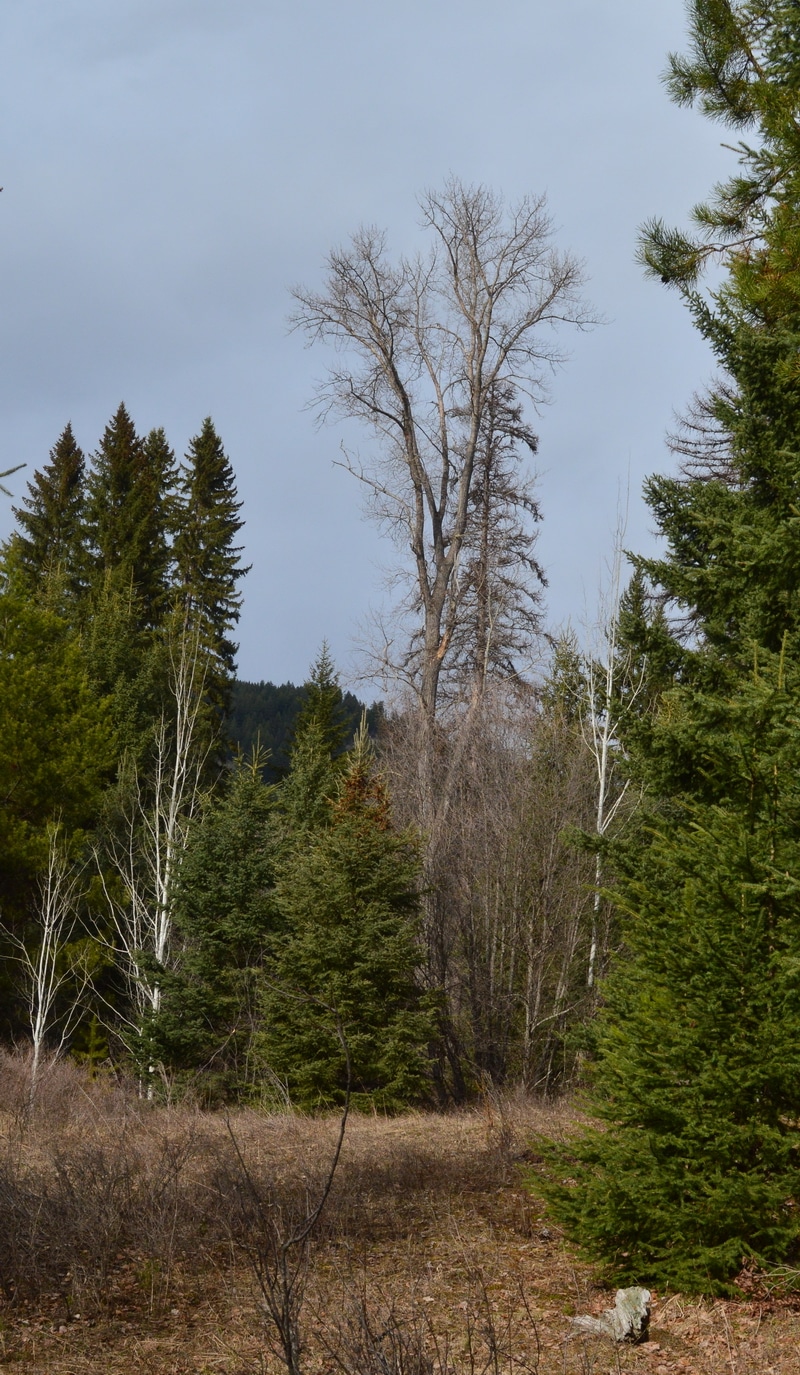
A mature cottonwood before leafing out in Spring
You’ll find these cottonwoods near water in a riparian habitat or where the habitat contains underground springs. Cottonwoods are tall trees and will stand out in the forest, surrounded by shorter pines, spruce, and birch. Often other fast growing, water-loving species will be growing nearby such as aspen and alder. These pictures are of the Black Cottonwood, native to Western North America. The bark of the trunk of a mature Black Cottonwood tree is grey and deeply fissured.
The root system is shallow and wide spreading. The wood is corky and not strong. Branches often break off in a windstorm and in spring a strong wind can blow over an old tree. After a wind storm you may find branches loaded with unopened buds lying on the ground under mature cottonwoods.
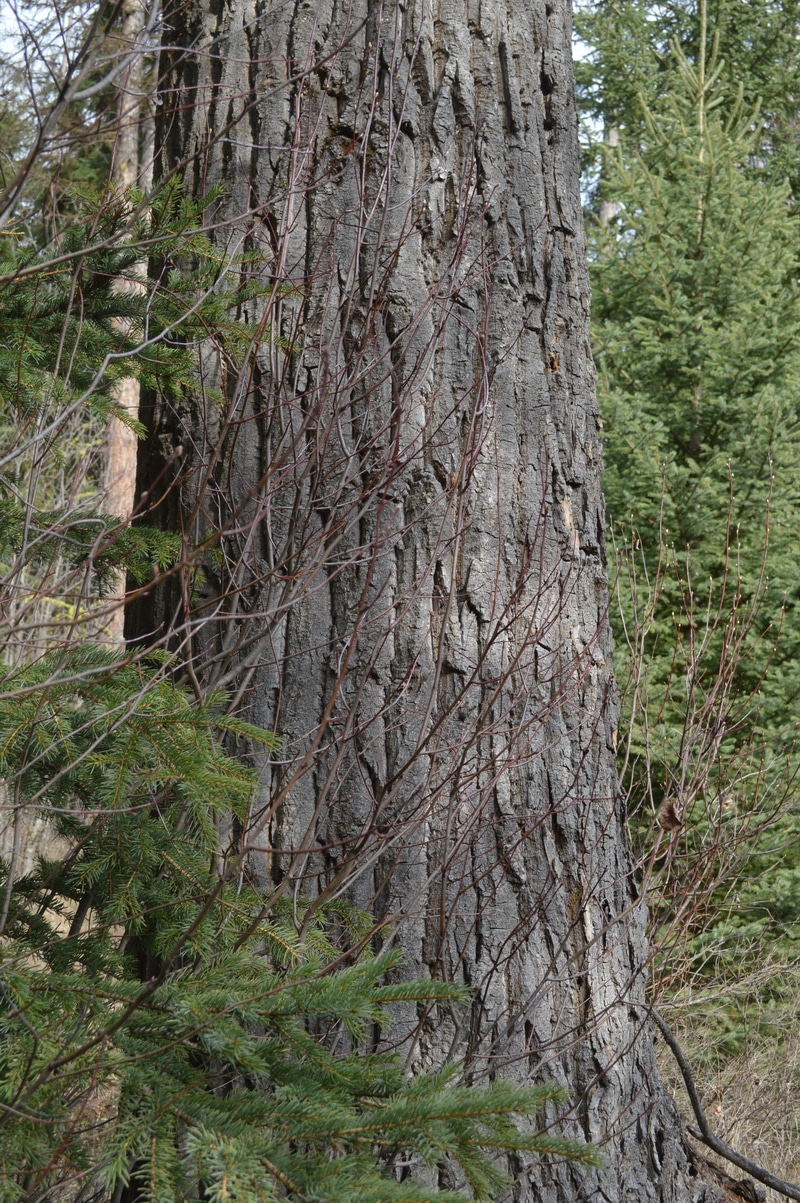
The deeply fissured trunk of a mature cottonwood poplar.
The young tree bark is grayish green with prominent lenticels, similar to birch. The young growth changes colours to bright reddish brown as the sap rises in spring. The mature tree can be up to 30 meters (100 feet) tall and has a distinctive silhouette in the spring landscape. If you are looking for a tree in the summer, it will be fully leafed out. The leaves are dark green, long, and sometimes heart-shaped. On the underside of the leaf, there is often a splotch of the reddish-brown resin still evident.
The cottonwood trees are prone to wind damage and a windfall branch in winter or early spring can yield an abundance of resinous buds. If you find such a treasure, be sure to harvest every single bud. On the other hand, usually, the tree is too tall to allow you to harvest from a mature tree, and those looking for this herbal treasure will be searching for young saplings between 2 feet and 10 feet tall. At this height the trunk is supple and the branches can be bent over to bring the buds within easy picking range.
I’m told that the First Nations people in British Columbia tap the mature cottonwood trees to gather the resinous healing sap, but I haven’t had personal experience with this way to harvest Balm of Gilead. I’d love to learn more about this practice. If you’ve done this yourself or watched the elders do it I’d love it if you’d leave a comment and tell me your experience.
Conscientiously harvesting Balm of Gilead Buds
The cottonwood buds contain the sticky resin that is responsible for the healing properties of Balm of Gilead. The resin is the sap from the tree. If you wait another week or two, these buds will swell with the resin and then the leaves will unfold. Once the leaves break the window for the harvest season is over.
The ideal time to harvest these buds is early spring, as the snow is receding but where there are still night time frosts. If you are smelling the poplar buds on the wind, then you should look at higher elevations. Once you can smell them the sap is evaporating on the open leaves and the season has passed, but there might still be unopened buds higher up.
Since the buds represent the leaves of the tree, you want to leave enough buds on the plant to nourish the root for another season and produce the next spring’s leaf buds. The leaf buds grow during the summer months and then lie dormant on the tree from leaf drop until they swell with the rising sap, the following spring.
A general rule for harvesting cottonwood balm buds is to never take the terminal bud, which is the primary growing point at the top of the stem, as this bud represents the growing branches, as well as the future leaves. Of the buds that alternate along the branch, take only a 1/3rd. Don’t harvest from a tree that has already been harvested from – including those buds eaten by ungulates. Overharvest will kill the young trees.
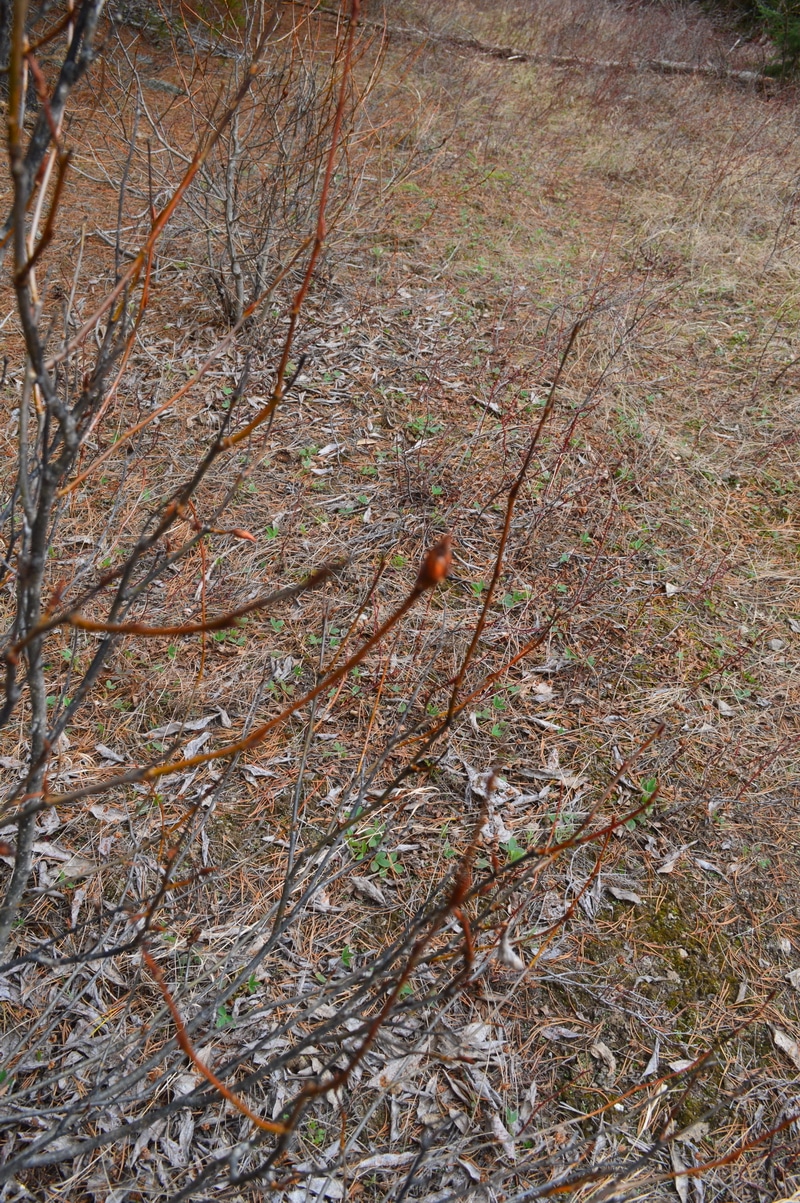
The resinous buds of the black cottonwood. The buds are “Balm of Gilead.”
General rules for harvesting buds from a black cottonwood
- Only harvest on land that you own or land where you have permission to harvest.
- Make positive identification of the tree.
- Don’t take more than 1/3rd of the buds.
- Don’t take the terminal tip on any branch.
- Respect the growth needs of the tree.
- Use what you take.
What you will need to harvest
When you go to gather in Balm of Gilead buds, you will need a basket or container to gather in our harvest. Don’t plan to put it in a handkerchief or hat, as the resinous buds will stain the cloth. A plastic yogurt container that you add a handle to, is lightweight and will more easily be cleaned than cloth.
You just use your fingers to harvest and pinch off the buds, using your hands makes it less likely that you will damage the bark of the tree.
How to deal with sticky fingers during the harvest
Harvesting resinous buds will leave your finger coated in the reddish-brown resin. You can minimize the discomfort of sticky fingers right in the field. Growing in close vicinity to the Balsam poplar and cottonwood trees are Trembling Aspens (Populus tremuloides). Look for the white yeasty powder on the smooth bark of the Trembling Aspen. When you rub your hands on the bark of the tree, the white powder covers the resin on your fingers, removing the stickiness, so you can keep picking.
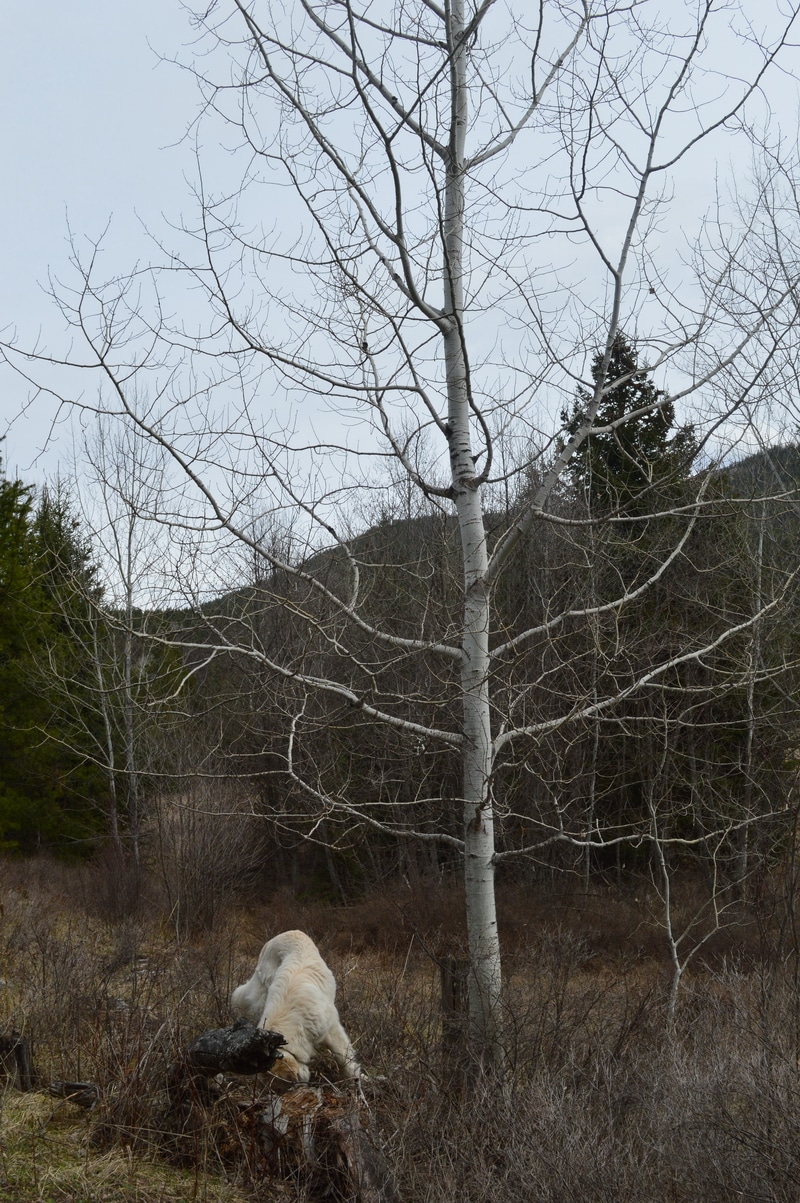
When your fingers are sticky from picking the spring buds of balsam poplar or cottonwood, look for the Trembling Aspens.
Making Balm of Gilead infused oil
Expect a meagre bud harvest unless you have a huge plantation of Cottonwood trees. Be sure to use whatever you do harvest, fully.
- For 1 cup or less of buds, place the buds in a wide mouth pint size mason jar. If you have two cups to 4 cups of buds, use a wide mouth quart jar.
- Fill the jar to within 1 inch of the top with olive oil.
- Put the jar in a warm spot. I put my jars in a sunny window where the warmth of the sun helps the buds to release their resin.
- Over a month or so, the resin will slowly move into the oil, giving the golden oil a deep reddish hue.
- Shake the jar to distribute the resin, a few times a week, while you are waiting. The oil will take on the pleasant, Balm of Gilead perfume.
After a month of jar shaking, strain the oil into a clean, brown or blue coloured glass bottle. Cap the jar tightly and label it with the date and contents, “Balm of Gilead.” You can discard the spent buds in the compost pile.
Optionally, add a ½ teaspoon of natural source vitamin E oil to your final bottle of Balm of Gilead infused oil to protect the oil from rancidity. If you keep it tightly capped and store it in a cool dry place, your harvest should last 4+ years
Making Balm of Gilead Ointment
Balm of Gilead oil is like gold around here. Since it is harvested by hand, you can’t buy it. As far as I’ve seen, the buds aren’t available in any herbal store, so if you don’t know someone who makes it or harvest your own, you are out of luck.
It takes hours to harvest a small number of buds, and while the harvest is a pleasant experience, no one does it to make money. Knowing this, you will want to treat your harvest well so that you don’t lose a single, precious drop of this healing oil.
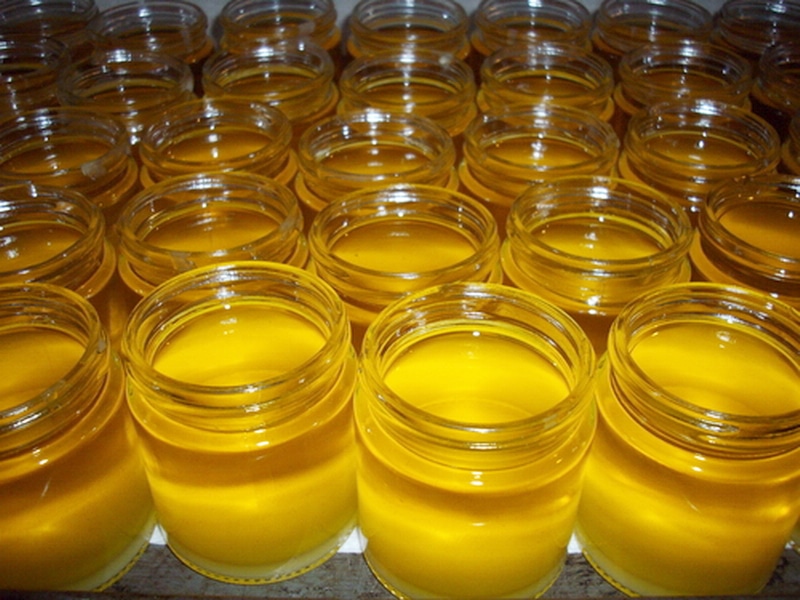

Balm of Gilead Ointment
- Prep Time: 5 minutes
- Cook Time: 20 minutes
- Total Time: 25 minutes
- Yield: 4 ounces 1x
- Category: Herbal Remedy
Description
Balm of Gilead salve is anti-inflammatory, and pain relieving and traditionally used for sore joints and muscles.
Ingredients
- 1/2 cup infused Balm of Gilead oil
- 1 tablespoon (12 grams) beeswax melted
Instructions
- Make a double boiler using a glass measuring cup. (See the directions here)
- Add balm of Gilead infused oil and beeswax to the glass measuring cup.
- Heat until the mixture is blended and the beeswax is fully melted. Don’t allow it to simmer though. Keep it just warm enough to make everything liquid.
- Pour into two 2 oz. glass jars or salve tins. Cool to room temperature.
- Cap tightly.
- Label and seal.
Balm of Gilead Ointment
- 1/2 cup infused Balm of Gilead oil
- 1 tablespoon (12 grams) beeswax melted
Directions:
- Make a double boiler using a glass measuring cup. (See the directions here)
- Add balm of Gilead infused oil and beeswax to the glass measuring cup.
- Heat until the mixture is blended and the beeswax is fully melted. Don’t allow it to simmer though. Keep it just warm enough to make everything liquid.
- Pour into two 2 oz. glass jars or salve tins. Cool to room temperature.
- Cap tightly.
- Label and seal.
When to use Balm of Gilead Ointment
Balm of Gilead Ointment is:
- Analgesic
- Anti-inflammatory
- Anti-bacterial
- Astringent
- Helps detoxify
- Helps heal coughs
Balm of Gilead ointment has done some miraculous feats on my homestead. It relieves pain, especially the pain from sore muscles, arthritis, and broken bones. It reduces swelling and inflammation. Balm of Gilead oil relieves pain at the nerve level, and reduces inflammation. Combined with St. Johns Wort infused oil, it can do amazing things where there are shooting pains or injuries in the joints or even broken bones. Combine Balm of Gilead with St. Johns Wort for nerve pain, and comfrey for bone healing. Balm of Gilead salve used alone or in combination with other herbs is beneficial for joint pain and stiffness, that inhibits movement. Combine it with cayenne for a warming salve that increases blood flow to joints.
True Stories about the healing efficacy of Balm of Gilead
In the summer of 2010, a friend was visiting the farm, complaining of swelling in his knee. 10 months before he had been loading a prize-winning giant pumpkin into his truck, and he didn’t see the trailer hitch. He took the hitch, full blow, onto the knee cap. The swelling and pain never abated so his normal daily walks and bike rides had to stop. He could barely walk, and spent many days in physio or icing his knee with no change in his condition.
Since my friend was a diabetic, the long injury was an ill-omen. The day before this visit to the farm, my friend said his doctor told him to put his house in order, he didn’t have long to live. Of course, I gave him some Balm of Gilead and St. John’s Wort ointment and told him to use it liberally.
I saw him a week later and he was super excited and wanting to know more about this ointment. The swelling in his knee was reduced by 90% and he had full mobility once again.
On another occasion, Mr. Joybilee was loading wood into a wheelbarrow deep in the cold of January. He slipped on the icy driveway, coming down sharply on the handle of the immovable wheelbarrow breaking some ribs. Ouch! While he was given a prescription for Tylenol with codeine to help with pain management, the Tylenol just made the ever-present pain harder to cope with, while clouding his mind, and causing constipation. You know the routine.
Constipation caused straining which caused more pain. I very gently applied Balm of Gilead oil directly to the rib cage and applied a hot flax bag to the area (hot compress). The pain abated within 30 minutes and stayed away for 4 to 6 hours. No more prescription pain killers needed. We added St. John’s Wort tincture (orally) and Balm of Gilead ointment (topically) to the routine and he found tremendous relief. Within a week, he only needed the ointment at night to help him sleep, until the ribs were healed.
Balm of Gilead can be combined with other anti-inflammatory herbs to relieve a variety of pains. When you make your herbal infused oils this summer, consider infusing Comfrey leaf, St. Johns Wort Flowers, Calendula flowers, Arnica blossoms, Dandelion blossoms, Ox-Eyed Daisy flowers, and plantain. Use these oils in combination with Balm of Gilead when making several analgesics, healing, and anti-inflammatory ointments and salves.
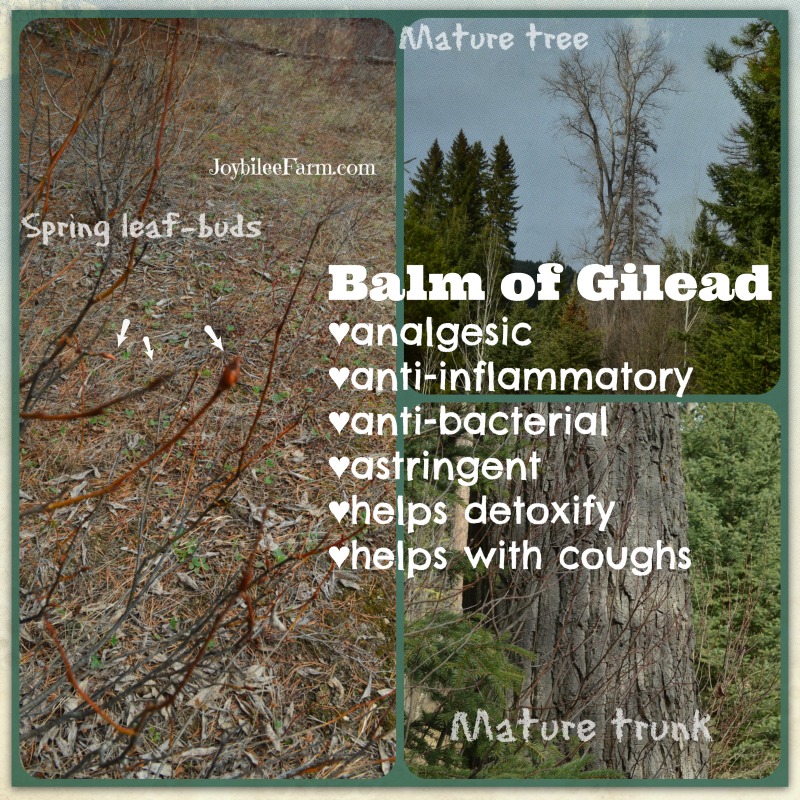
Balm of Gilead Materia Medica
Download the Balm of Gilead Fact Sheet (pdf)
Cautions:
Balm of Gilead contains Salicin, which converts to salicylic acid in your body. If you are allergic to aspirin, check with your doctor before using Balm of Gilead oil. If you are unsure, test it on your skin in an inconspicuous spot to make sure that you are not allergic. If you notice any heat or redness developing, don’t apply it to your skin.
As always, this is shared as a neighbour to a neighbour home remedy. Always consult your health care professional for serious medical conditions and do your own due diligence.
I hope you found this post helpful. Please share it with your friends. Thanks.
I have a FREE gift for you

Grab my free ebook and learn to make DIY herbal healing salves at home now, with 14 easy to follow recipes that use the herbs and wild plants growing close to home. Salve making is one of the easiest skills to learn in DIY Herbalism.


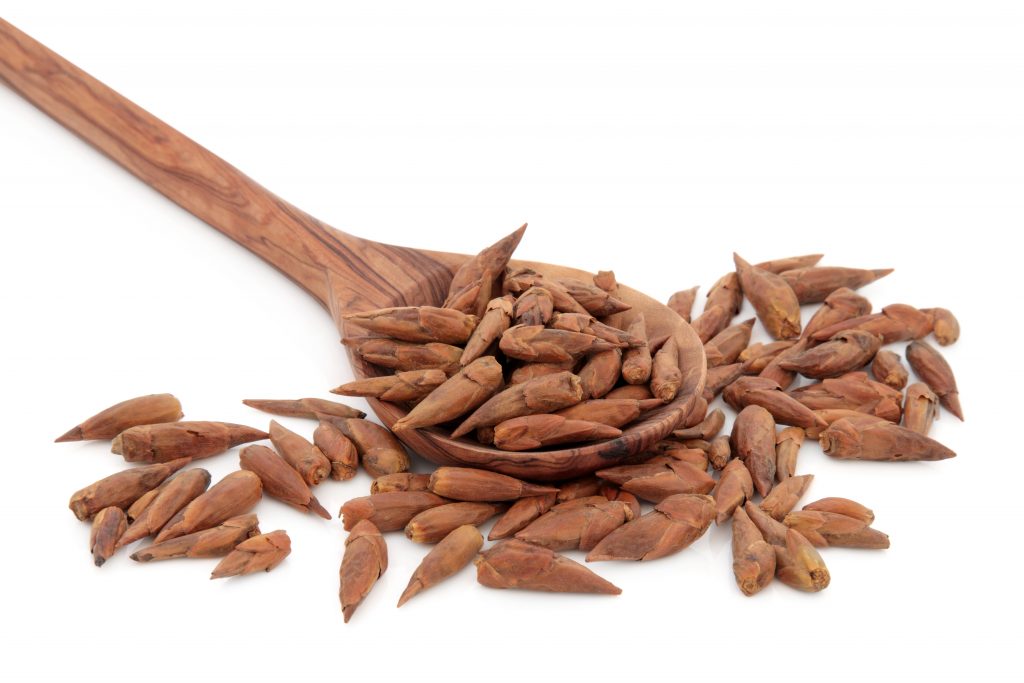

thank you for all of this wonderful info, freely given – especially the part about conscietious harvesting and NOT taking terminal buds or too many leaf buds; so many people don’t know that stuff! I love your blog and will be reading more. I hope you and your family are all well and safe from the covid.
I harvested some last year. I mix coconut oil, beeswax and the infused balm of Gilead in mine.
My wife accidentally ran a power washer over her foot last summer while doing the deck.
She put balm of Gilead on it and within seconds the pain was gone. She uses it for arthritis as well with remarkable results.
The only thing that took off the stickiness last year was olive oil and vigorous rubbing. This year I will be taking a small jar of it along with an old rag and just coat my hands as I go along and clean periodically.
Good hunting to all of you out there.
Where do you live? In Colorado? I have a sister in Kansas
that is interested in finding this park and see the ancient
trees. I live in Minnesota and am researching areas here
where I can harvest buds.
Do you sell the Oil you make?
I have a dear friend who has psoriasis mainly on his upper body I’m just wondering if this would help?